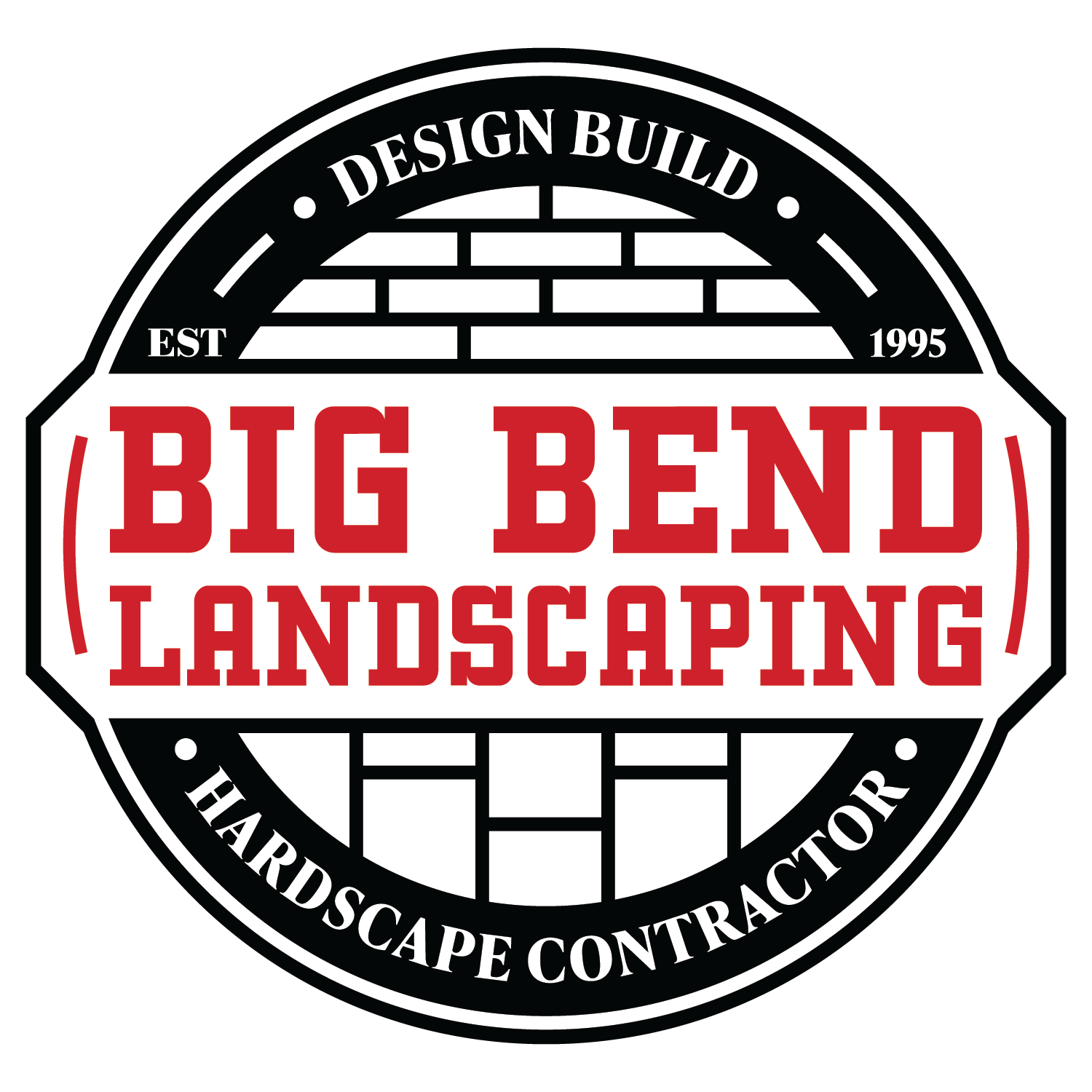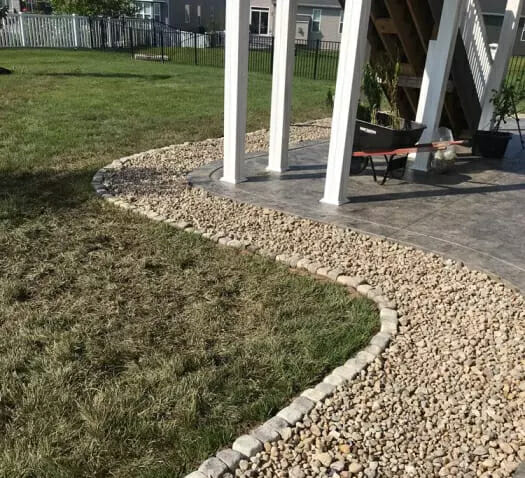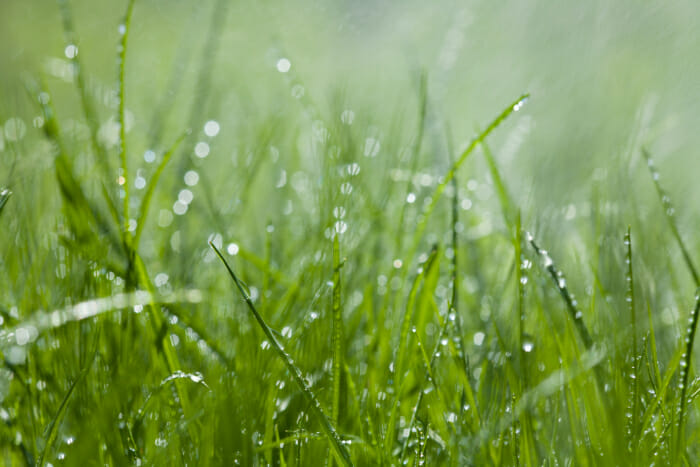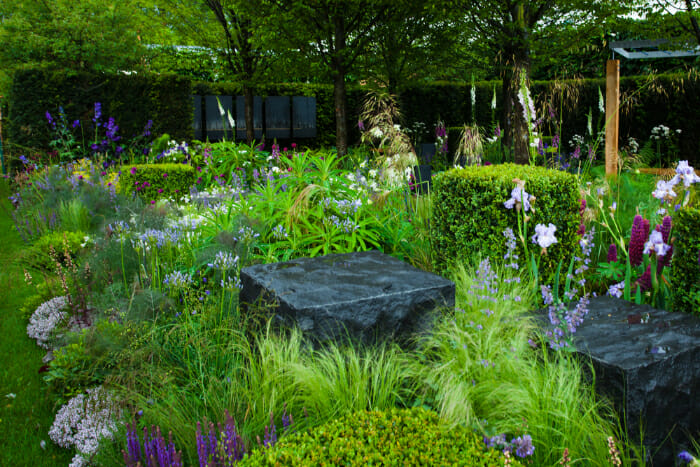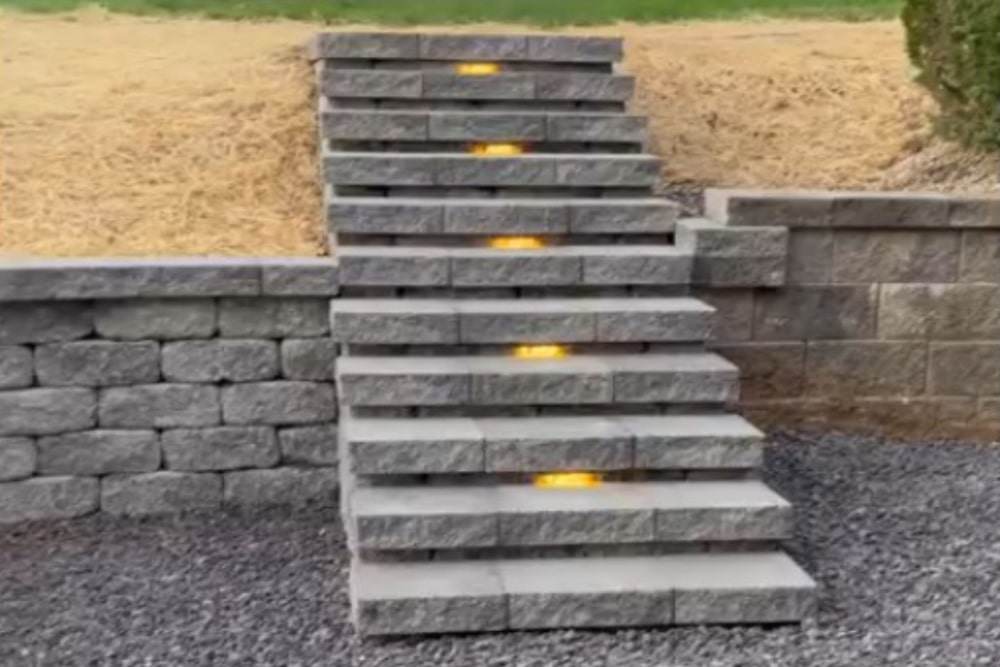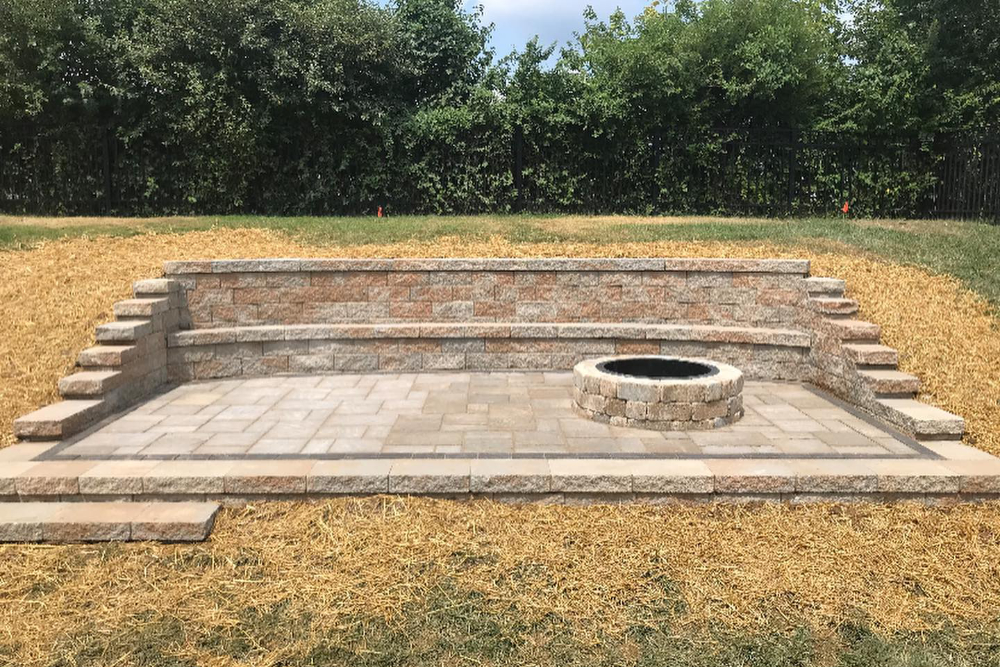Despite the forecast, live like it’s spring!
-Lilly Pulitzer
It’s February in St. Louis, and that means spring is almost upon us. And with spring comes rain and lots of it. Storm water management is an important part of home and yard maintenance here. If you’ve been in the St. Louis area any length of time, then you know it’s easier to prevent water damage than deal with the result of ignoring this or hoping it won’t be that bad this time. To that end, the experts at Big Bend Landscaping want to share five of the best backyard drainage solutions and preventative tips we’ve found.
Drainage Solutions Number One: Level Your Yard, but . . .

Take a hard look at your yard. Does it slope toward your home? If it slopes away, how steep is it? And where does the run-off go? Your driveway? A neighbor’s property? Or a street?
The number one element of storm water management is proper sloping combined with the right drainage.
Your yard should slope away from your home, with just enough of an incline to guide all water away from your foundations. Check your gutters as well. They should not empty out near the foundations of your home. And if they don’t—check to see where the water is going. Do you have a dry-well? Is it functional? Or are they emptying somewhere above ground? If they do, how does the landscaping there look? It swampy or bare?
If you’re facing a steep incline—either direction, a retaining wall may be one of the best the best backyard drainage solutions for your home. Retaining walls are an attractive landscaping tool that can be built of wood, concrete, or pavers. We favor paver retaining walls because they are attractive, come with life-time guarantees, and can be easily tailored to fulfill more than one purpose.
When Big Bend Landscaping builds one, we include a drainage system that will siphon water away from your home and driveway.
drainage Solution number two: add a dry creek bed
A dry creek bed or swale is an attractive approach to flooding issues when you have a patio or walkway that tends to collect water.
When we build walkways and outdoor living areas, Big Bend Landscaping recommends eco-friendly pavers to our customers because they are porous and allow rainwater to collect in the substrate as opposed to pooling on the surface. But for customers who aren’t yet ready to replace their patio or walkway or have a yard that collects and holds moisture, a dry creek bed filled with river rock may be the best solution. When placed nearby, it allows the water to drain naturally into the “bed” and then directs it to an area where it will do less damage.
Properly installed dry creek beds make stormwater management simple when the heavy rains come, and you’ll enjoy watching all that water drain away from your home, like your own private little creek.
Backyard Drainage solution number three: plant the right grass
This backyard drainage solution solves a lot of other problems too.
Your lawn is an important part of your drainage system. The root system of grass has evolved to take up as much moisture as it can during rainy seasons, so it can better withstand dry periods. The University of Missouri Extension recommends tall fescue grass as being the best grass for the St. Louis area lawns. It is low maintenance and stands up to excessive rains and drought. But close seconds are Kentucky Blue grass and Rye grasses.
Check your lawn for bare spots with poor coverage and consider seeding those with one of the recommended varieties of grasses. This will also prevent erosion and make your lawn more attractive, improving curb appeal, and even help with keeping your yard cooler during those extremely hot summers.
drainage solution number four: Plant a rain garden
A rain garden is a great backyard drainage solution! Because it not only helps manage those swampy areas of your yard and prevents run-off, it is attractive too! You can plant it in any area of your yard where water collects—including near gutters or at the end of drainage pipes. There are several plants, many of them native, that will slurp up the water as fast as it arrives and will reward you with beautiful foliage and blooms. A few examples of plants native to the St. Louis area are: Swamp Milkweed, Southern Blue Flag, Culvers Root, Golden, Alexanders
Drainage solution number five: Invest in rain barrels

Anyone who gardens can speak to the increase in water usage during the growing season. If you live in the St. Louis metro area, you probably cringe when it’s time to pay the water bill. Most gardeners know about the value of rain barrels. But what you might not realize is that they are also a great stormwater management tool when used correctly. This solution removes one source of saturation from the equation and is economical too. If you’ve been hesitating to purchase one, consider this incentive—WITH some caveats.
- Get rain barrels that are large enough to meet your needs—there is no point in purchasing a small one if you get more than a few inches of rain in the spring. If you’re feeling really ambitious, you can also purchase a cistern for the barrels to drain into, so that you can save even more of your spring rain.
- Place them carefully away from the foundation of the house so that there’s little chance of leaks coming into contact with your foundation.
- Make sure that your rain barrel has a screen over the top to prevent mosquitoes from laying eggs in the standing water (You can also purchase tablets that kill the larvae and won’t hurt your plants).
- Actually, USE the water in your rain barrels! Your flowers and lawn will love the rainwater, and you’ll love the drop in your water bill.
Here is some more information about them from the University of Missouri.
Conclusion
Big Bend Landscaping has been helping homeowners and business people in the St. Louis area with landscaping challenges for over 25 years. We are lifelong locals like yourself, and we have an intimate understanding of the geography and the challenges you face with stormwater management during our rainy season. And when our customers call us in search of a solution to the saturated drainage field in their backyard or concerned about how the slope is affecting their property values, we want to help. Chances are good that if you are in search of a backwater drainage solution, we’ve got your answer. Be sure and check out our drainage solutions page for still more suggestions and ways we can help!
And when you need a retaining wall, you can be secure with any product we use. All of our hardscaping projects are built using only the best products on the market, such as Pavestone, Romanstone, and Belgard products. Each of these companies provides lifetime guarantees for normal use. And they all offer a wide variety of looks that can be mixed, matched, and customized.
We’ve been building patios, pathways, fire pits, retaining walls, and seating walls in the St. Louis area for over 25 years. We have 62 five-star reviews on Google and an A+ rating with the BBB. Our crews have a Level 1 Certification from the National Concrete and Masonry Association. This means we’re experts in our field. Check out our testimonials to see what our customers are saying about us.
Big Bend Landscaping knows how to help you make the most of your outdoor living space. When you’re ready to make a change, check out our website for more details and contact us for more information!
